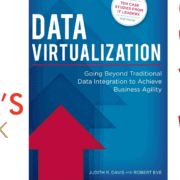AGILE DATA GOVERNANCE – THE SMART WAY TO UPGRADE YOUR DATA DYNAMICS?
In the dynamics of today’s business, data is key for organizational vitality. While the imperative of data-driven decision-making is paramount, traditional old school data governance methodologies can prove ponderous, impeding progress. Enter agile data governance, a transformative paradigm inspired by principles from agile software development.
Understanding Agile Data Governance
Agile data governance represents a contemporary and adaptable approach to data management, drawing inspiration from the agility of software development methodologies. It prioritizes collaboration, adaptability, and continual improvement, aiming to streamline decision-making and enhance communication across diverse departments and stakeholders.
Traditional Data Governance – The challenges & the case for the agile approach
Conventional data governance potentially encounters several challenges:
- Sluggish Processes: Extensive documentation and prolonged approval cycles can substantially delay data initiatives.
- Inflexibility: Rigid frameworks struggle to keep pace with the ever-evolving demands of the business.
- Top-Down Structure: Lack of collaboration leads to isolated information, hindering effective data utilization.
- Low Engagement: Complex procedures create disconnection and discouragement among data users.
Agile Data Governance – Distinct Advantages
- Accelerated Value Realization: Break down extensive governance projects into manageable sprints for swift implementation and feedback loops, ensuring alignment with evolving needs. Prioritize business value at each stage, concentrating on crucial data elements and processes for rapid wins and showcasing the value of data governance to stakeholders.
- Collaboration as a Cornerstone: Cultivate an environment where data producers and consumers collaborate, fostering a shared understanding of data definitions, usage guidelines, and ownership for improved data quality and accuracy. Leverage open communication channels and collaborative tools to encourage discussions, feedback, and shared ownership, dismantling silos and nurturing a data-driven culture.
- Embracing Continuous Enhancement: Adopt an agile mindset, emphasizing learning and adaptation based on feedback to keep the data governance framework relevant, efficient, and aligned with changing business landscapes and technological advancements. Regularly review and refine policies and procedures based on real-world experiences and user feedback, ensuring ongoing effectiveness and support for organizational evolution.
- Empowering Teams: Move away from a top-down, bureaucratic approach by equipping team members with the knowledge and tools needed to make data-informed decisions within defined boundaries. Promote ownership and accountability among data users, instilling a sense of responsibility for data quality and compliance, thereby fostering an engaged and data-driven workforce.
Implementing Agile Data Governance – Key Steps
While there is no one-size-fits-all approach, consider these key steps:
- Define business goals and objectives, clearly understanding desired outcomes from adopting an agile data governance framework.
- Identify key stakeholders and roles, involving data owners, stewards, consumers, and Business & IT representatives in the process.
- Prioritize data assets and processes, focusing on critical data elements aligned with business goals.
- Develop an iterative framework with clear principles, roles, responsibilities, and communication channels.
- Establish a continuous improvement process, regularly reviewing framework effectiveness and adapting based on feedback and emerging needs.
- Make optimal usage of fit-for-purpose tooling. While success isn’t solely dictated by technology, its impact on the degree to which agile data governance can be implemented is undeniable. It’s crucial to have a business-centric platform rather than one solely focused on IT to ensure a flexible and collaborative approach.
Conclusion
By embracing an agile approach to data governance, organizations can unlock the full potential of their data assets. Increased collaboration, faster time to value, and a culture of continuous improvement empower teams to make data-driven decisions and drive innovation in today’s dynamic business environment. Embark on your journey toward an agile data governance mindset and harness the power of data to propel your organization to success.











